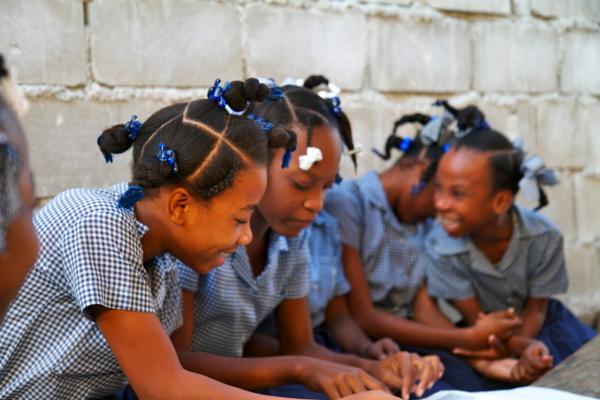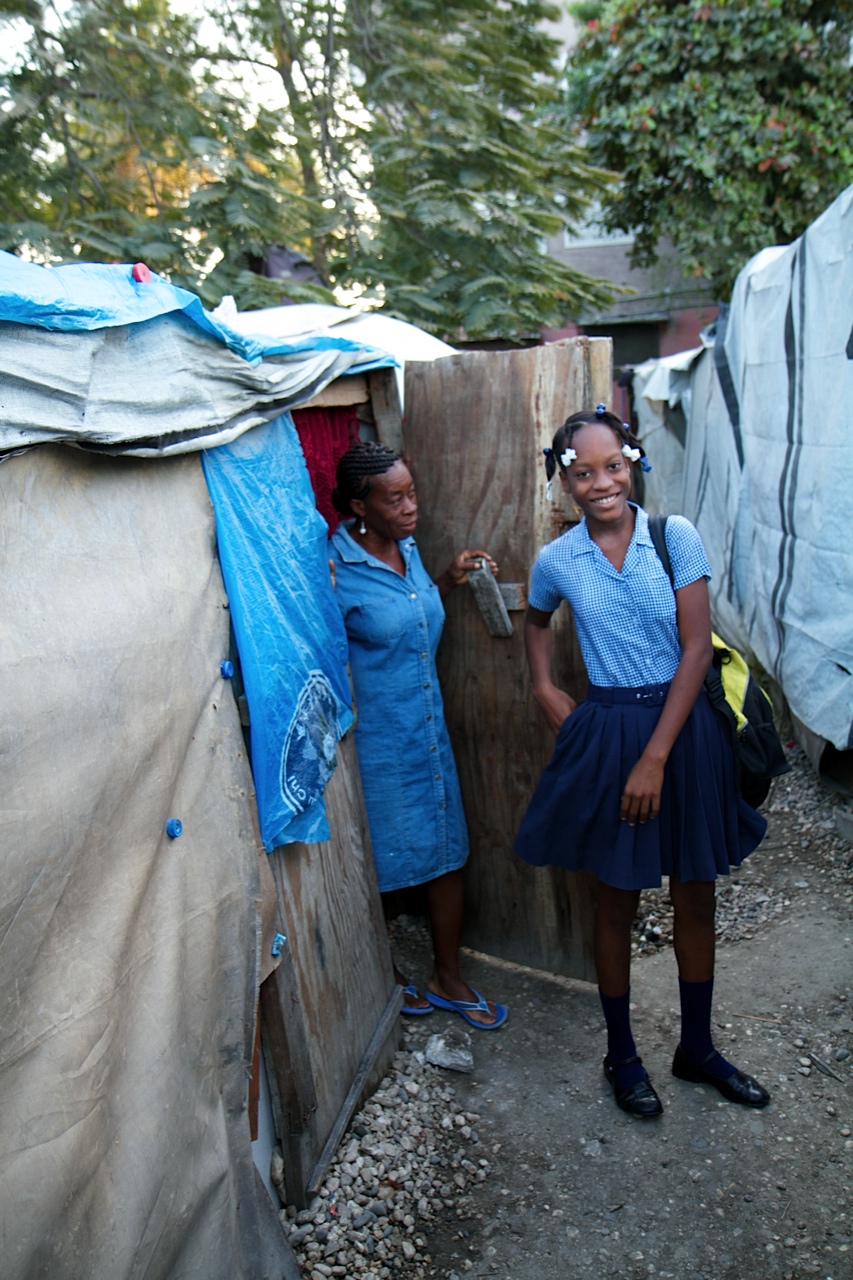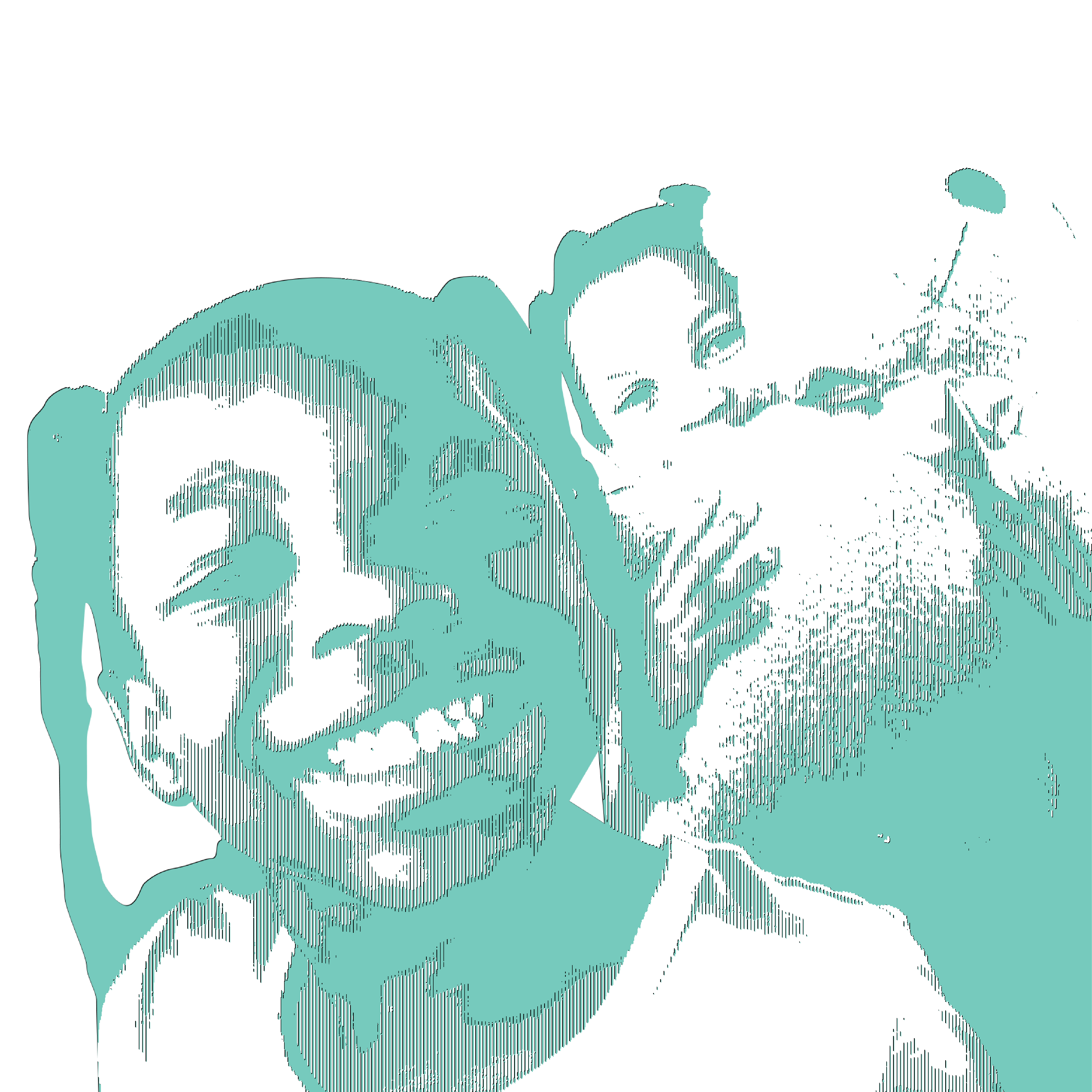
(A talk given at Elon University on September 27, 2012)
Good evening. I'd like to thank Dean Parsons, Glenn Scott, and Don Grady for hosting us, and everyone here at Elon University for coming out tonight.
I thought I would take this occasion to tell you about my own experience in Haiti—as well as that of other Pulitzer Center journalists and Student Fellows. I also want to underscore the importance of telling these stories.
In the afternoon of January 12, 2010, 200,000 people were killed in Haiti, and many more lost their homes. All in less than 30 minutes.
Today, in the capital of Port-au-Prince, 500,000 people still live in tent camps. These camps are everywhere—bordering the main thoroughfares, occupying areas covered in rubble on what was once a public park or on land where houses once stood, next to churches or across from the National Palace.
I traveled to Haiti in January 2012, two years after the earthquake. I saw the wreckage, toppled homes, fallen churches, abandoned buildings. But I also witnessed the resilience and the courage of the Haitian people and the tenderness with which they reached out to each other.
Because I wanted to write about a schoolgirl who lived in a camp, I started out visiting several public schools in downtown Port-au-Prince. The school principals were wary of negative publicity—as they would be here in the U.S.—and I was informed that I would need official permission to interview a student. I was sent to the Ministry of Education and, after being passed from one administrator to another, I received the go-ahead.
When I returned to the Ecole Republique du Chili, the principal did not look pleased. She was still nervous about what I would write, yet she agreed to let me talk to Mme. Berthude, the 6th grade teacher.
Mme. Berthude assured me that none of her students lived in a tent camp. I whispered to her that the principal had said many of the schoolchildren lived in camps. The teacher then turned to the class and asked: "Does anyone live in a camp?"
Eleven hands shot up. Although Mme. Berthude looked surprised, none of the students seemed embarrassed or ashamed. Living in a camp was simply a fact of life. It made no difference to the students whether their classmates slept in a house or a tent.
The teacher introduced me to a girl named Cynthia and explained that I wanted to tell her story to a U.S. audience. Cynthia pulled out her mobile phone and called her mother to ask permission—yes, she lived in a tent and had a cell phone.
That afternoon I followed her home to the tent camp and met with her mother. I needed to make sure she and her daughter were both comfortable sharing their life with a stranger. Cynthia's mother could not have been more welcoming.
The next day my husband and I went to the camp very early in the morning to record a day in her life. And here is our story:
Video: http://pulitzercenter.org/reporting/cynthia
Before I said good-bye to Cynthia's mother I asked how long she thought her family would be living in the tent camp. She answered that they did not know. It was clear they had no expectation of leaving.
When the tents were first erected people were told they were temporary. Houses would be repaired. New homes would be built all within six months. But that hasn't happened.
Cynthia and her family have not moved from the tent. Yet in many ways Cynthia is among the more fortunate. She has two parents who love her dearly and make sure she has enough to eat. The family sings in the church choir. Most importantly, Cynthia has every intention of staying in school. Her father works as a taxi driver and can afford her school supplies.
But there are others who face greater challenges than Cynthia—and their lives have been documented by several Pulitzer Center grantees. Poet Kwame Dawes, photographer Andre Lambertson, and reporter Lisa Armstrong traveled to Haiti on several occasions after the earthquake.
Along the way they met children who suffered from HIV/AIDS, children who were raped, children who were homeless. I will leave you with a glimpse of the stories they found. You can find more of their reporting on the Pulitzer Center website and in the iBook "Voices of Haiti."
Kwame and Andre focused some of their work on the mother/child transmission of HIV/AIDS in a country severely affected by the disease. Partners in Health, the organization run by Dr. Paul Farmer, as well as Gheskio and other local organizations started by Haitians who test positive for HIV have helped and strengthened scores of people, young and old.
Mrs. M, a woman with HIV, is featured in Kwame's writing and Andre's photography. Two of her four children are infected with the virus. Kwame writes, "I could not stop thinking about what she carried inside her over the years. . . Her son must ask himself, 'Was it something she did to make this happen?' I thought that if his questioning broke my heart, then how much more does it break her heart, again and— again."
Mrs. M makes house calls, often assisting Joel Sainton, a pastor, who tested positive for HIV ten years ago. While I was in Haiti I met both Mrs. M and the pastor. Joel is still thin but he is hearty and energetic and he now ministers to over 450 people with HIV/AIDs . He has also raised two boys in his 2-room house on top of a steep hill. He has kept them in school—one is now 18—he fixes radios and is learning electrical skills. Joel says he remembers that he lives with HIV only when he takes his medicine. "God gave me the power to live so other people can live," he says.
Journalist Lisa Armstrong has gotten to know a group of AIDS orphans—young girls who are HIV positive. These girls live in a tent camp near the airport. Twelve of them were raped in one night and one now has a glass eye. This girl lost her left eye during the rape. Five of the girls have stayed together and now sleep on two mattresses in a crowded tent. Lisa writes that in some ways they are like most teenagers, but they are also more serious. "They have no one to lean on."
In October 2010 another disaster hit Haiti—a cholera epidemic. After the waterways became contaminated, 7,000 Haitians died and more than one half million people became sick. It is thought the UN peacekeepers from Nepal introduced the disease into Haiti when sewage leaked into the Artibonite River.
In June 2012, more than 24,000 people still suffered from cholera. That month two Pulitzer Center student fellows from Boston University, Jason Hayes and Meghan Dhaliwal, traveled to Haiti to report on the effects of the cholera epidemic. They also looked at what Haitians are doing to prevent the spread of the disease. They saw the importance of advocating not only for the use of the cholera vaccine but for clean water sanitation programs and infrastructure.
They found that children are the ones most motivated to change their behavior—using a latrine instead of a field, remembering to wash their hands, drinking clean water—and children are their parents' best teachers.
One of Meghan's stories is called "A Homerun in Haiti." It tells of two filmmakers Bryn Mooser and David Darg who coach the only little league baseball team in all of Haiti. Joseph Alvyns, the 17-year old team captain, travels to Toronto to throw the first pitch for the Toronto Blue Jays game. He talks to his mother on the phone. Meghan writes, "Joseph mentions that it is cold in Toronto, and in a quintessentially motherly way, Marie Claude asks if he packed a jacket." Three weeks later Joseph calls David Darg and says, "David, my mother has died of cholera."
"Baseball in the Time of Cholera" opened this summer and can be viewed online. I recommend that all of you see it. At the end of the film Joseph is back on the baseball field playing the sport he loves. He is surrounded by people who cheer him on.
That so many are still suffering from cholera and that those who still live in tent camps have little expectation of moving to a new home anytime soon is heartbreaking. Yet there are signs that change will come. Or as the Haitians, who like to speak in proverbs say, "Fok sa change." That means, "It has to change."
And if you look hard you can see that change is underway:
• Andre Eugene "J" Robert, one of Haiti's well-known artists, who has exhibited his work throughout Europe, runs an after-school art program for disadvantaged children, called "Ti Moun Rezistans." Young people learn to produce art while developing business skills. Andre provides the space for them to exhibit and sell their work.
• In La Difference, a two-block area in Cite Soleil, Port-au-Prince's poorest slum, the streets are clean and the houses brightly repainted. The area has been transformed with the proceeds from a neighborhood recycling venture.
• KOFAVIV is a grassroots organization run by rape victims for rape victims. Lisa Armstrong met girls as young as fourteen, who have turned to KOFAVIV for help. This organization provides weekly support meetings as well as training in sewing, jewelry and pottery—beads that are made at KOFAVIV are sold in U.S. stores such as Anthropologie.
In August 2012, almost seven months after I visited Haiti, torrential rains and winds from Tropical Storm Isaac destroyed many of the tents—leaving Haitians homeless and killing 24 people.
Yet the damage was not as great what some had predicted. Volunteer efforts to warn Haitians about the impending storm and the danger of landslides were successful. After the storm I heard from Cynthia's older brother Ernso (who has intermittent access to facebook). He said "toute est OK"—his family are all "OK."
But they have not left the tent camp.
It matters that we—as journalists—let the world know that 500,000 Haitians are still living in tent camps.
It matters that we let the world know that more than 24,000 Haitians were suffering from cholera in June 2012.
It matters that we let the world know that nearly half of all people living with HIV in the Caribbean reside in Haiti and that women who live in camps are at increased risk of rape and HIV infection—and that their children risk mother-child transmission.
But it also matters that we let the world know that the Haitian people are blessed with grace and vitality, perseverance and the strength to meet life's challenges. It is their gift. We see it in Cynthia, a 6th grade student, and we see it too in Joseph, who plays Little League.
Perhaps the most famous Haitian proverb is "Beyond the mountain, there is another mountain"—it is a proverb made popular by Tracy Kidder in his book about Paul Farmer, the doctor who has done the most to change the face of public health and of Haiti.
Yes, in Haiti, there are always more mountains beyond mountains.
But the Haitians also live by another proverb: "Little by little the bird builds its nest."
Little by little, Haitians will rebuild—and, little by little, our stories can help make that possible.
Elon University
September 27, 2012





